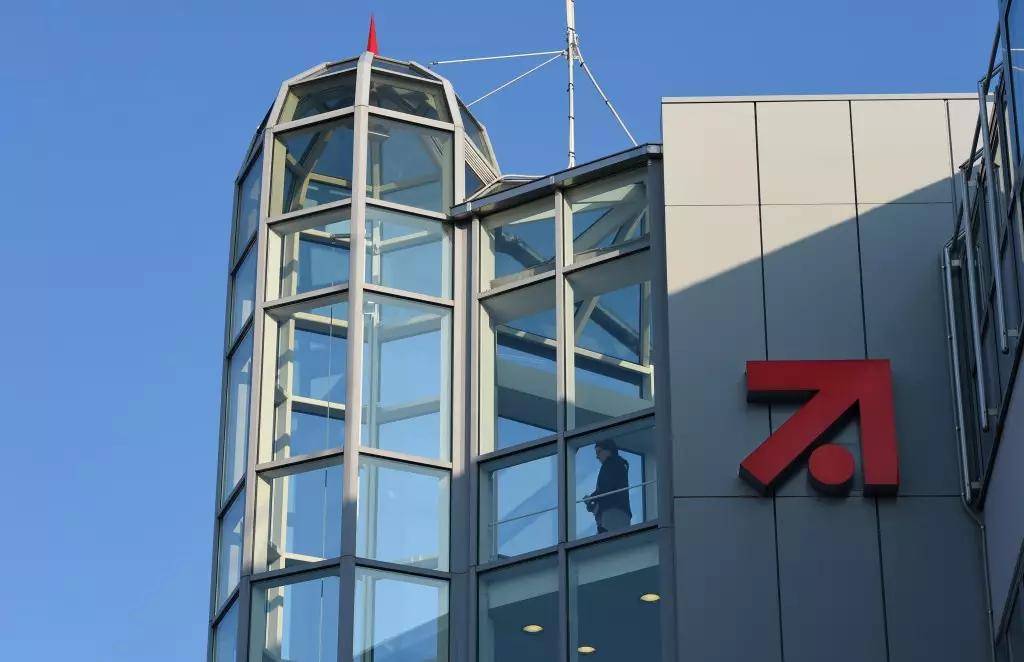The recent financial results from ProSiebenSat.1 for the third quarter of 2024 paint a complex picture of a media conglomerate grappling with economic headwinds yet finding a promising path through its streaming initiatives. While traditional revenue sources have shown a slight stagnation, the digital and streaming segments stand out as bright spots for the company, signaling a potential pivot in the industry.
ProSiebenSat.1 reported revenues of €882 million for the third quarter, representing a small decline of 0.6% compared to the same period last year. While this minor drop seems negligible, it is indicative of a larger trend of consumer restraint affecting spending on TV advertising and a significant downturn in the Dating & Video segment, areas that previously contributed substantially to the company’s revenue streams. The adjusted EBITDA also fell, though only by 5.6%, from €110 million to €104 million—again, a decline that could suggest tightening margins amid stiff competition.
In contrast, the company’s adjusted net income saw an impressive increase of 32.6%, climbing from €23 million to €31 million, showcasing a potentially improved efficiency in operations or a more favorable cost structure. However, this positive figure is somewhat overshadowed by a drastic 36% reduction in adjusted cash flow, which dropped to €25 million from €61 million. Such a decline raises concerns about the company’s liquidity and its ability to invest in growth areas without compromising financial stability.
The ProSiebenSat.1 results under scrutiny reflect the current economic landscape in Germany. The management pointed out that private consumption has not developed favorably, impacting the TV advertising sector critically. This economic strain often leads advertisers to pull back on their spending, which has been corroborated by the decline in traditional ad revenues. Notably, the European Football Championships and the Summer Olympics slated for summer did not generate the anticipated financial uplift, further complicating the environment for traditional broadcasters.
As CFO Martin Mildner remarked, the expected growth from anticipated sports events fell short, which raises questions about the forecasting methods used by ProSiebenSat.1 and their understanding of economic shifts. The caution exercised by advertisers and consumers alike has compelled the company to reevaluate its strategies and to focus more intently on its digital transformation journey.
On a more optimistic note, ProSiebenSat.1 has found resilience in its streaming services, particularly its AVOD (Advertising Video on Demand) segment, which houses the streaming platform Joyn. The 28% growth in AVOD revenues over the previous year, alongside a remarkable 53% increase in monthly video users—reaching 6.8 million—highlights a burgeoning interest in digital content consumption. This shift is reflective of broader trends in the media landscape where consumers are increasingly migrating towards on-demand services.
The total viewing time surge of 27.9 billion minutes, a 34% year-on-year increase, suggests that while traditional TV viewing might be waning, on-demand and streaming services are capturing the audience’s attention in more engaging ways. With total advertising revenue from the Digital & Smart vertical increasing by 7% over the nine-month period, ProSiebenSat.1’s digital strategy is beginning to pay off, implicitly signaling a reallocation of resources and focus towards digital content delivery as the backbone of future growth.
Looking forward, ProSiebenSat.1’s management remains optimistic about navigating the turbulent economic climate, focusing on consistent cost management and the strategic pivot towards digital and streaming offerings. The company’s discussions regarding the sale of e-retailer businesses Flaconi and Verivox indicate a willingness to streamline operations and consolidate focus on its media and entertainment segments.
Despite the challenges, including the looming shadow of earlier shareholder dissent and the company’s future trajectory still being indeterminate, the commitment to enhance digital revenues and revise their operational strategies suggests that ProSiebenSat.1 is on the right path. The key challenge will be balancing traditional and digital operations whilst adapting to the rapidly evolving media consumption preferences of their audience.
While ProSiebenSat.1 faces considerable challenges in the current economic environment, its focus on digital transformation, especially through streaming, offers promising avenues for growth and resilience. The company’s long-term success will be measured by its ability to bridge the gap between traditional broadcast revenues and the rising tide of digital media consumption.

